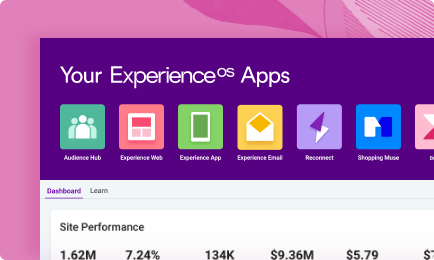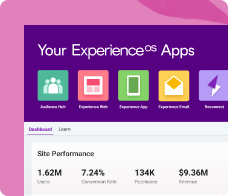Setting sail with personalization: How TUI Cruises kickstarted success with audience segmentation
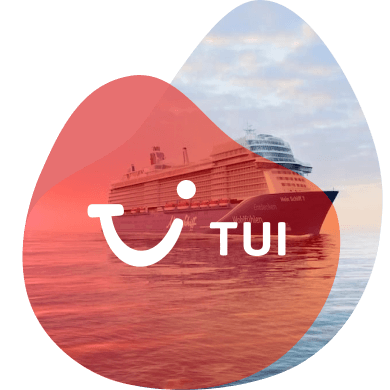
Introduction
Based in Germany and founded in 2008 as a joint venture with Royal Caribbean Cruises Ltd and TUI AG, TUI Cruises delivers hundreds of worldwide voyages year-round. With so many different types of adventures offered, a challenge for the business is identifying and catering to the diverse preferences of its consumer base.
When TUI Cruises began its personalization journey with Dynamic Yield in 2022, the team came to the table with a clear vision for its key audience segments, based on known travel data that corresponded to the company’s existing travel packages.
By anchoring its first personalization campaigns around these audience segments and using them as the springboard for innovation and A/B testing, TUI Cruises has proved that when there is a clear vision for macro customer segmentation, even the smallest initial tests can yield big results.
“As a premium cruise company, we are attuned to our clients’ different needs and preferences. There’s a lot to choose from — location, cabins, entertainment — and it will all appeal differently depending if you’re a first-timer, family, couple, etc. Personalization empowers us to act and deliver a truly standout booking and cruise experience tailored to the individual.”

The Challenge
When it comes to travel, differences amongst consumers are not only obvious, but addressing them is critical to conversion rate optimization. A family looking for bonding time together won’t want to book a cruise meant for couples, and a solo traveler looking for maximum relaxation time won’t want a voyage meant for children.
However, when the consumer must discern for themselves the type of cruise they’ve clicked on, there is a high risk of losing their interest. No one has time for exhaustive travel research, so capturing attention, delivering the right information, and feeding into a customer’s desire as swiftly as possible is key to keeping customers engaged and driving conversion.
TUI Cruises recognized this challenge and invested in Dynamic Yield to tailor its booking website to visitors based on their overall travel preferences, becoming one of the first cruise companies to leverage omnichannel personalization to create a premium, seamless customer journey.
Execution
Before launching any personalization campaigns, TUI Cruises spent time digging into its customer data to understand how to segment its audiences. During this process, the team came up with three macro categories with distinct preferences and needs: Solo Travelers, Families, and Couples/Empty-Nesters.
Solo Travelers make up 11% of the overall travel market1, and that number has trended upwards in recent years. The team at TUI Cruises looked through its behavioral analysis data and observed that a large portion of this group is made up of millennials, who value a sense of “freedom” and independence with their vacation.
Families have very different preferences and needs. For example, realistic travel times for families are often tied to school and holiday schedules, so a visitor looking for a family trip likely wouldn’t want to browse off-season cruises or solo cabins. Families also value staying entertained, opportunities for bonding time, and clear schedules.
Couples and Empty Nesters comprise a growing portion of the market, as the percentage of adults living without children2 has increased rapidly in recent years. TUI Cruises determined through past data and customer surveys that most non-married or empty-nester couples cited having new experiences and “an adventure together” as important to their holiday time.
By taking the time to pinpoint these macro segments and define the key values for each group, the TUI Cruises team established a robust foundation for personalization. They used these audience segments to build their first campaigns, which addressed the values of each group and targeted the highest-trafficked areas of the site to grab attention and deliver immediate results from personalization.
One of the first campaigns TUI Cruises rolled out with Experience OS was different homepage banners and messaging based on audience segments. Travel research is overwhelming, so TUI Cruises wanted to capture attention on the homepage with relevant content.
The team displayed three different types of banners for couples, families, and solo travelers.
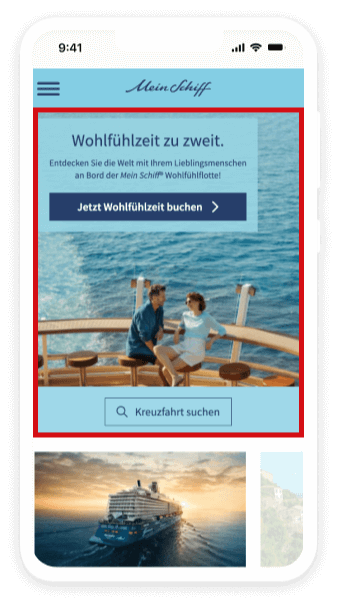
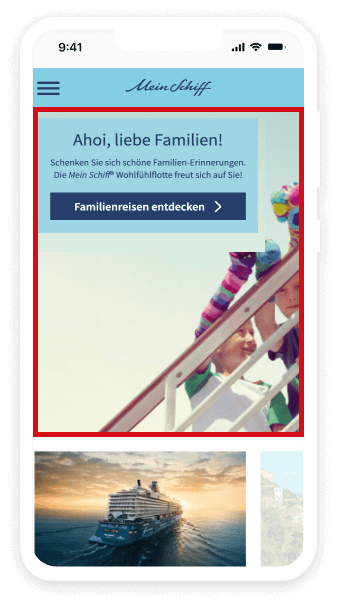
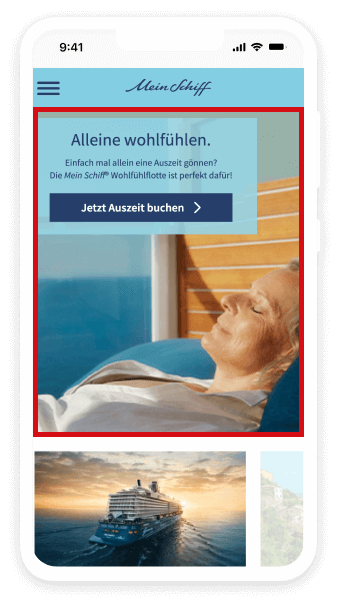
The results from this campaign were positive overall, with the content resonating more strongly with some groups over others. For example, the personalized messaging for couples drove a +48% increase in click through rate for that group, while the personalized messaging for families drove a +253.7% uplift in click rate. Solo travelers drove the most engagement, with a +604.1% uplift in click rate, increasing the number of pages visited by this group by +5.7%. Overall, this campaign drove a +10.3% uplift in add to cart rate across all audience groups.
As part of its personalization program, TUI Cruises wanted to explore re-engagement strategies for families, who are the most likely audience segment to spend extensive time researching a cruise. This group makes many trips to the website before booking, and is most likely to get interrupted mid-browsing.
The team already had inactive browser tab messaging that would activate when a visitor had clicked away from the site, but they experimented by changing the messaging specifically for families.

By replacing the generic re-engagement messaging with family-specific copy, TUI Cruises saw a +28% increase in users from this group at check-out after they clicked back to the site.
In addition to early personalization campaigns based around its macro audience segmentation, the team at TUI Cruises wanted to address booking lead time preferences. They observed two distinct types of travel planners: those that book immediately (within 3 months of the cruise date), and those that book far out (more than 3 months in advance of the cruise date).
The team hypothesized that they could generate more engagement with messaging that speaks to these preferences, so they rolled out banners on the homepage and product listing pages (PLPs) addressing these two types of planners.
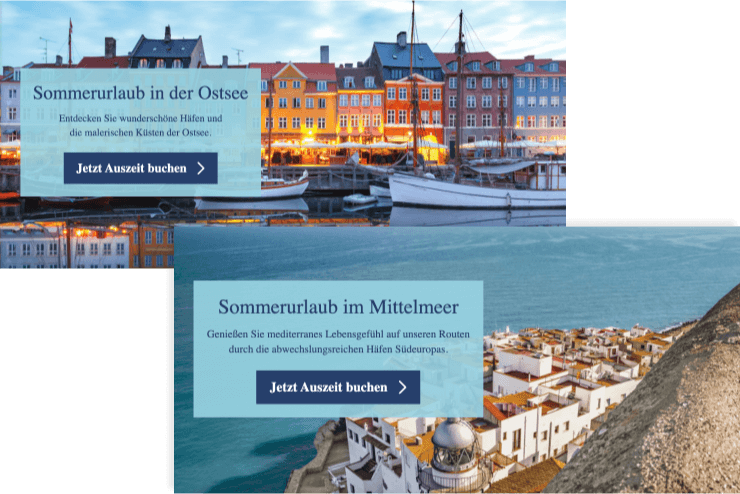
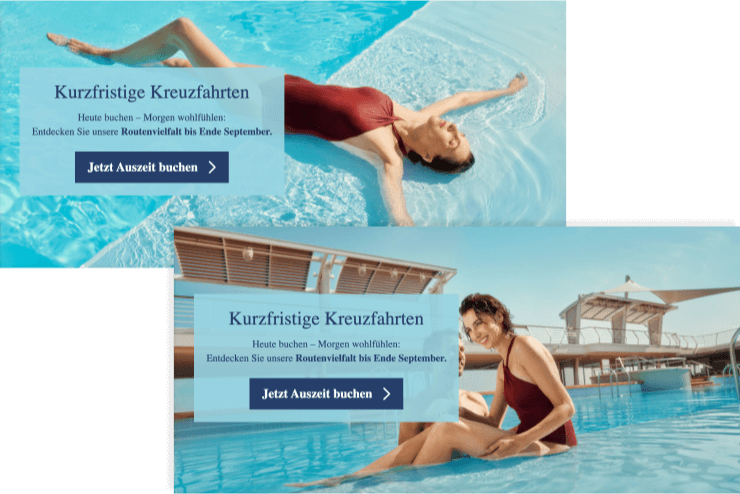
By showing messaging based on a customer’s affinity for booking lead times, TUI Cruises saw an overall +191% increase in click-through rate.
While TUI Cruises knows the importance of maintaining its core audience segments, the team’s ultimate goal with personalization is to leverage as many data points as possible to deliver an end-to-end experience tailored to the individual — not just the segment.
In their path to achieving this, the team used Dynamic Yield’s unique Affinity Allocation feature to automatically deliver the most relevant content to the user, resulting in fully customized product discovery pages. In this efficient system, the team simply tags content by affinity (let’s say “Water Excursions” vs. “Fine Dining”). Then the Affinity Allocation feature automatically shows the right content to the individual according to their affinity profile, which updates in real time based on behavior. The result looks like the example below.
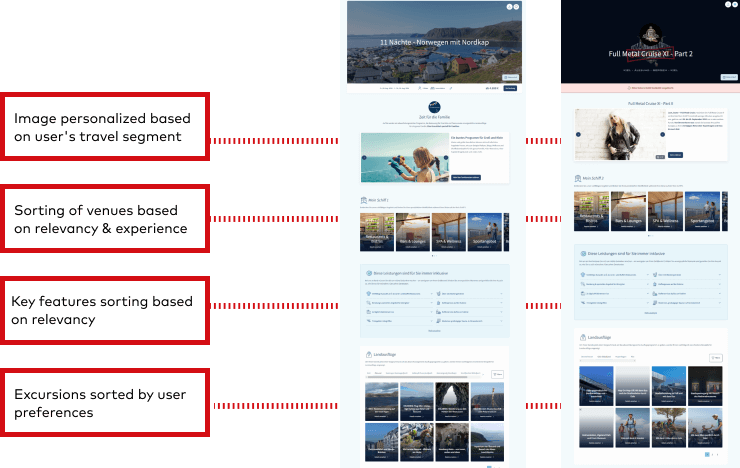
For TUI Cruises, personalization is just getting started. The team knows that there are endless opportunities for mixing and matching travel preferences to deliver impactful experiences, which has helped them build out their ambitious personalization roadmap. In the near future, the team plans to roll out voyage recommendations on the PLP, taking into consideration a visitor’s booking lead time affinity, preferred travel season, distance of the port relative to the visitor’s location, voyage length, cabin types and price points, and much more. The success of TUI Cruises’s early use cases, made possible by a clear grasp of audience segmentation, has secured buy in for personalization and empowered the team to continue its journey.
The Key Takeaway
A macro-segmentation approach to its key travel audiences gave TUI Cruises the compass for its new personalization program and helped the brand launch to strong results. With a continued focus on understanding audience segments and optimizing content for different types of travelers, TUI Cruises has endless opportunities to deliver a premium, streamlined travel booking experience with personalization, securing relationships with customers for years to come.
